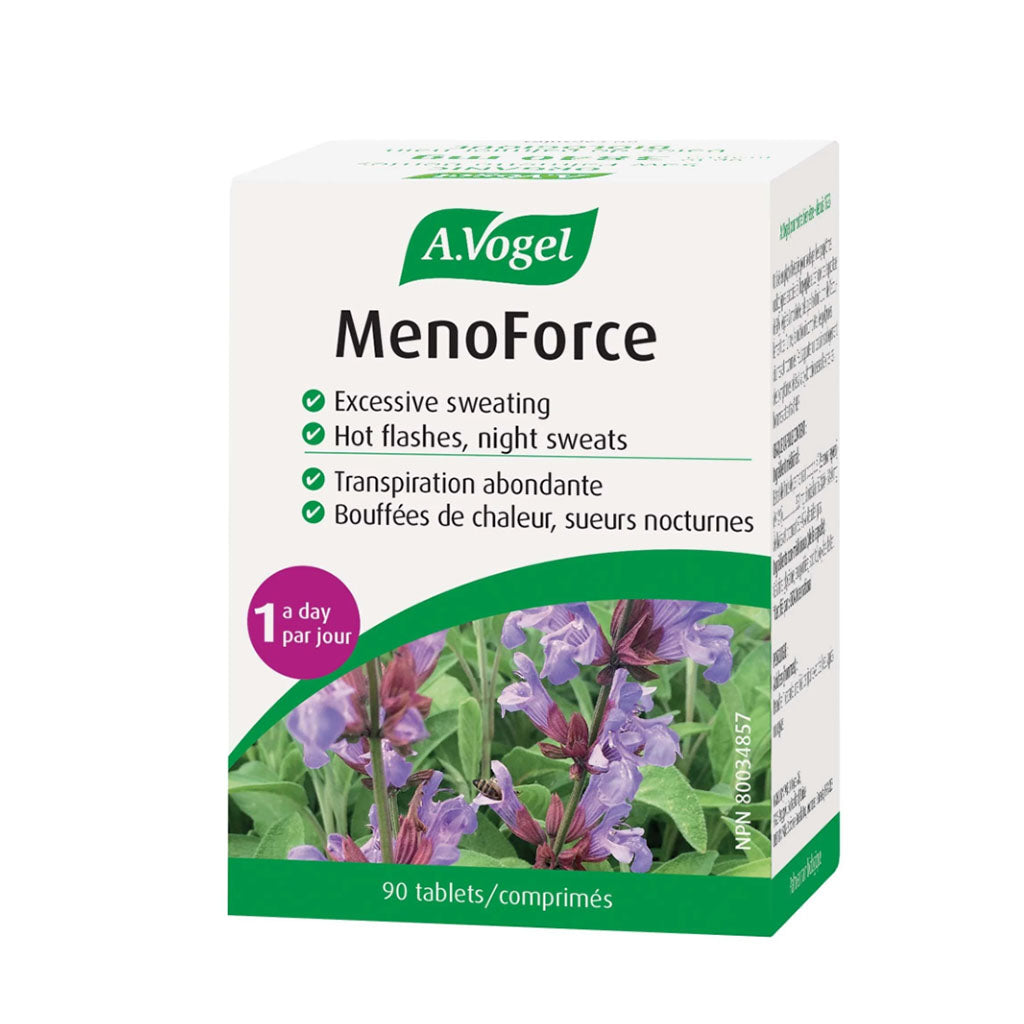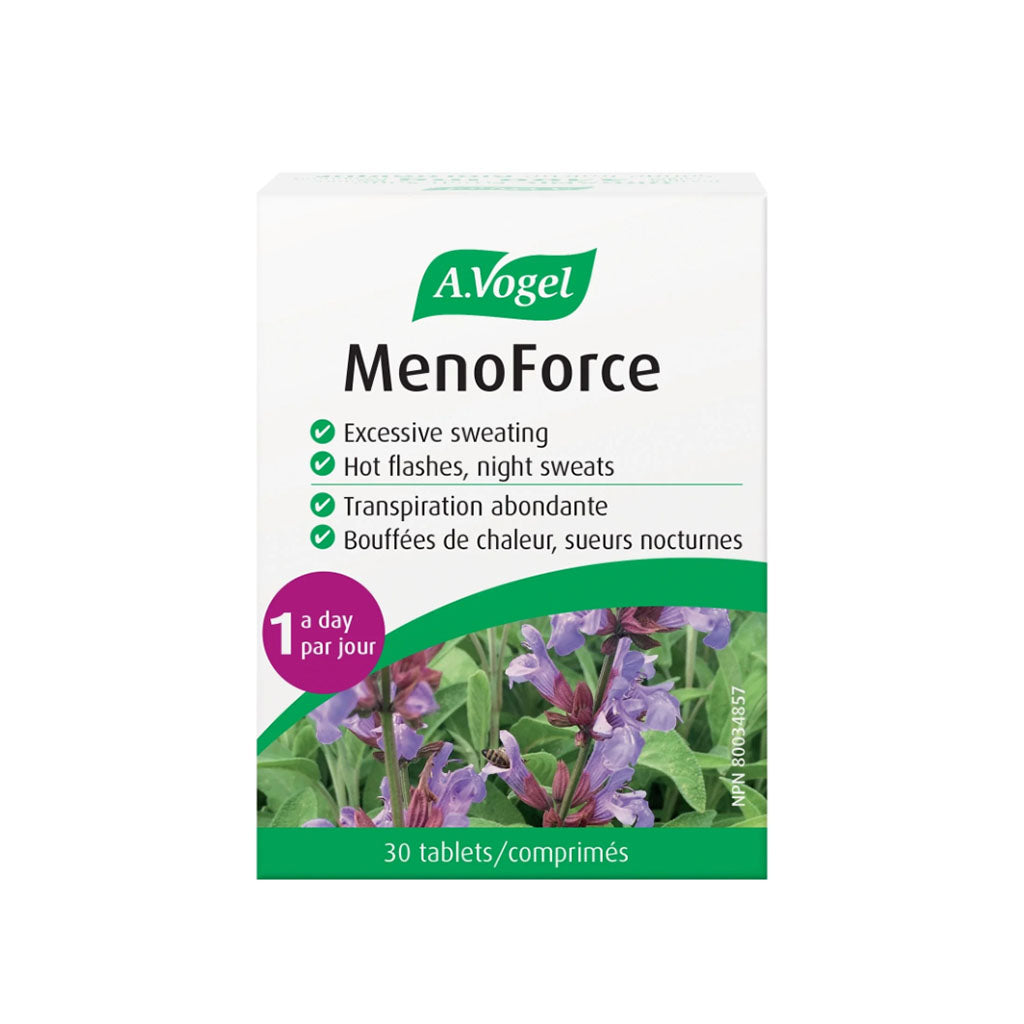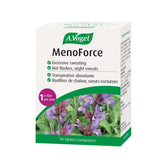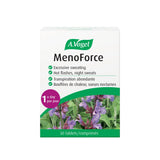



Menoforce (Menopause)
- 69.99$
- 69.99$
- Price per unit
- by
Historical overview
Sage (Salvia Officinalis) is a shrub native to the Mediterranean. Traditionally, among the ancients, sage was considered a veritable panacea. Over time, the following indications have proven more convincing. Applied topically, sage is useful against inflammation of the mucous membranes and tonsils. Used internally, it helps reduce excessive perspiration, such as that of the very sick (tuberculosis), improves digestion and promotes wound healing. Its reputation as a brain tonic has long been laughed at, but researchers have recently highlighted its beneficial effect on Alzheimer's patients(1).
Actions and pharmacology
Sage leaf contains tannins, bitter principles (diterpenes), steroids, flavonoids and an essential oil rich in terpenes (thujone, camphor, etc.). It is recognized for its carminative (anti-gas), antispasmodic, anti-inflammatory, astringent and antimicrobial effects.
It is these antispasmodic and astringent effects that explain its usefulness against excessive perspiration and hot flushes.(2) In a recent in vitro study, sage was found to have an affinity for benzodiazepine receptors in the brain, which may explain its calming effect.(3) In another in vitro study, sage also demonstrated an antioxidant effect.(4)
The German Commission E recognizes the use of sage for dyspeptic disorders (poor digestion with no apparent damage to the stomach) and excessive sweating.
Scientific studies
The tolerability and efficacy of sage tablets were verified in a multicenter clinical trial of women suffering from hot flushes (5). This 8-week clinical trial tested the safety and efficacy of a holistically standardized extract of fresh sage, presented as a single daily dose, in women aged 50 to 65 who had been menopausal for at least 6 months and were experiencing hot flushes at least 5 times a day.
Results
- After 4 weeks, the average number of hot flushes had fallen by 50%.
- After 8 weeks, this number had fallen by 64%.
- At week 8, the number of hot flashes was still decreasing, making it possible to anticipate further reductions with continued treatment.
The more intense the hot flushes, the more striking the results:
- Low-intensity hot flashes were reduced by 46%.
- Moderate-intensity puffs were reduced by 62%.
- Severe puffs were reduced by 79%.
- Very severe puffs were eliminated.
According to patients' diaries, the highest number of low-intensity puffs during week 0 averaged 59 per day - that's more than one puff every half-hour for 24 hours! After 8 weeks of treatment, the highest number of low-intensity hot flashes had fallen to an average of 7.6 per day. Tolerance was judged very good or good by 87.3% of doctors and 87.3% of patients.
Fresh sage leaf* (Salvia officinalis) (ratio 2.8:1 - 4.9:1) 280 mg, equivalent to 795-1370 mg fresh leaves.
Made from fresh sage tincture* (1:17)... 3,400 mg.
Microcrystalline cellulose, sucrose laurate, hydrogenated cottonseed oil.
*Certified organic by Bio Suisse.
Adults: Take one tablet, 1 to 5 times a day with water. In acute cases: take the maximum dose per day.
Related products
- From 29.99$
- From 29.99$
- Price per unit
- by
- From 29.99$
- From 29.99$
- Price per unit
- by
- From 29.99$
- From 29.99$
- Price per unit
- by
- From 29.99$
- From 29.99$
- Price per unit
- by
- From 29.99$
- From 29.99$
- Price per unit
- by
- From 29.99$
- From 29.99$
- Price per unit
- by
- From 29.99$
- From 29.99$
- Price per unit
- by
- From 29.99$
- From 29.99$
- Price per unit
- by
- From 29.99$
- From 29.99$
- Price per unit
- by
- From 29.99$
- From 29.99$
- Price per unit
- by
Recently viewed products
- From 29.99$
- From 29.99$
- Price per unit
- by
- From 29.99$
- From 29.99$
- Price per unit
- by
- From 29.99$
- From 29.99$
- Price per unit
- by
- From 29.99$
- From 29.99$
- Price per unit
- by
- From 29.99$
- From 29.99$
- Price per unit
- by
- From 29.99$
- From 29.99$
- Price per unit
- by
- From 29.99$
- From 29.99$
- Price per unit
- by
- From 29.99$
- From 29.99$
- Price per unit
- by
- From 29.99$
- From 29.99$
- Price per unit
- by
- From 29.99$
- From 29.99$
- Price per unit
- by
- Choosing a selection causes the entire page to be updated.


